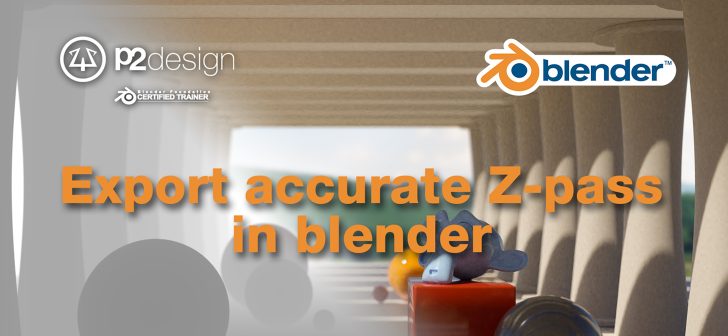p2design writes:
Hi Everyone,
Here is a short tutorial on how to create accurate and antialiased Zpath for your compositing in and out of Blender. This is not the ultimate tip as it can't fit alpha based render but I believe it will help as it's an old topic. Whenever you can't work your DoF directly in blender, that can help.
Hope to be back soon with new videos.
Cheers,
Pierrick






12 Comments
So how would this be practically used in a final render? A Z-pass looks exactly what one would use for a height/displacement map, but it completely lacks color. Of course, you could use it to mess around in the compositor, but you didn't reveal any jaw dropping results on that front..
Check out Andrew Price's alien planet tutorial. You can do cool atmosphere effects with the z pass.
What is s*it in Blender??? No correct z-depth???
Hi Alexein, The Z pass is correct in blender don't worry.
The problem is how to export it outside of blender to use it in after effects or photoshop for exemple.
This is a redondent problem so I've tried to find a fix.
Thanks, exellent tutorial .
This is a silly and all too common misunderstanding of render passes.
An anti-aliased depth pass is not a depth pass. The whole point of not being anti-aliased is to provide the correct depth of a given pixel. By 'anti-aliasing' a depth pixel you are creating new and inaccurate data through the blending of z-values.
Hi Mormo, You are right, but this is not the goal here.
If you want to use a true accurate Z pass, then you just have to use blender Z pass in blender.
The goal here is to be able to quickly and easily use it in AE or PSD for Dof and whatever atmospherical effect you want to do.
As soon as you alterate any kind of information, you sure make it wrong, but I think with this method compared to the usual normalise method, you get a better information and value output.
hope it makes sense.
Cheers,
Pierrick
Alright, so I found the tutorial I think you were referring to IAN, it's called "How to make Mars in Blender" (and if anyone else was curious). But he quickly pulls out to Photoshop with the extracted Z-pass...
That's why I brought that tutorial up. It looked like the author of this one was showing how to export the Z pass to another program so I was just trying to show a practical example of why one might want to do that. Hope it was helpful.
Yes, however it is utilized (or even used in the compositor for an animation), this Z-pass technique seems very useful. I am imagining ways to reevaulate a current scene with it (and the mist pass). It takes detail-oriented people like you guys to inform us of these minute features, so thanks!
Hi, please do a Blender 2.8 version of this tutorial!
How can you export a z pass for nuke? I end up getting all white. I understand that you can adjust the z pass in blender compositor. And that the z pass uses blender units between 0-1. So it ends up looking all white. However i would like to use the z pass for dof z defocus nodes. As well as deep compositing.